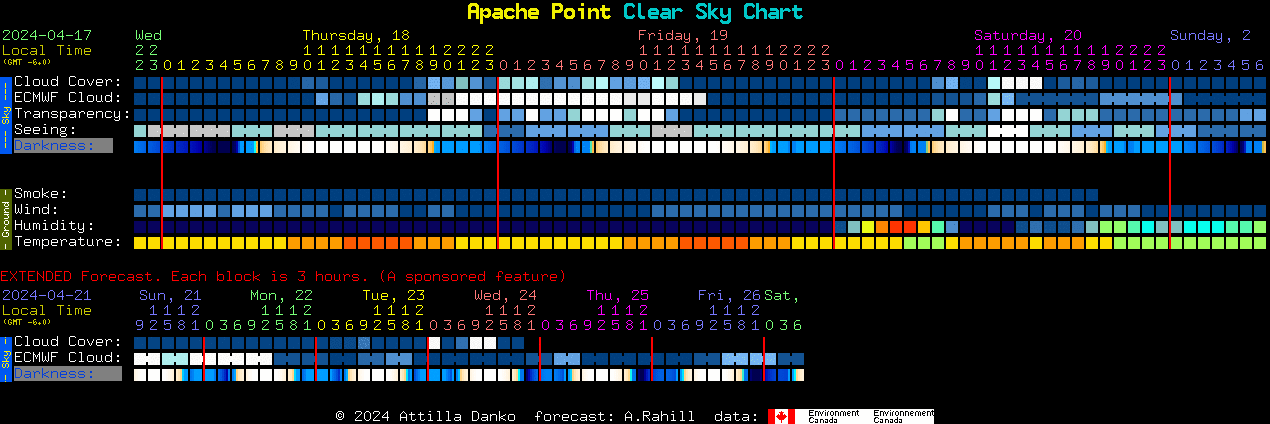Infrared satellite map disabled until further notice

APO has three anemometers: on the 50-foot met tower, on the west end of the 2.5m, and on the main building. The met tower wind speed is averaged over 15 minutes. The building wind speed is the median over one minute, and the gust is the peak speed in a 15 minute interval.
The wind direction convention is that 0 degrees is a northly wind, 90 degrees is an easterly wind, 180 degrees is a southerly, and 270 degrees is a westerly wind.
Dust count is measured on the landing on the ARCSAT dome by a Lighthouse Remote 5014P, factory modified to sample 0.3μm particles. It works by drawing air through a tube into the counter, where photodiodes measure the occulation by dust particles of light from an infrared laser. The air pump draws 0.1 cubic foot of air per minute through the counter. The counter is automatically run for one minute every 15 minutes. Data is collected on the number of dust particles larger than 0.3 μm and the number of particles larger than 1.0 μm in the plots, these counts are plotted in units of particles per cubic foot of air. The data points for the >0.3 μm particles and the >1.0 μm particles have been divided by 10000 and 100 respectively in this plot. Here are a few more details:
DATA ARCHIVES: Weather · DIMM · IRSC.